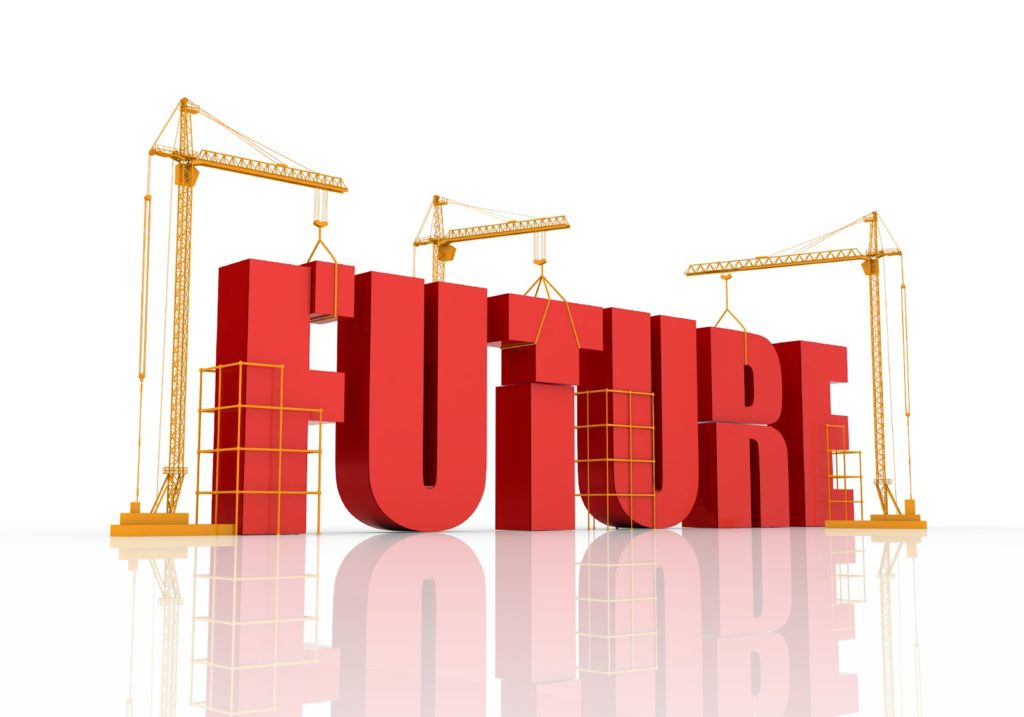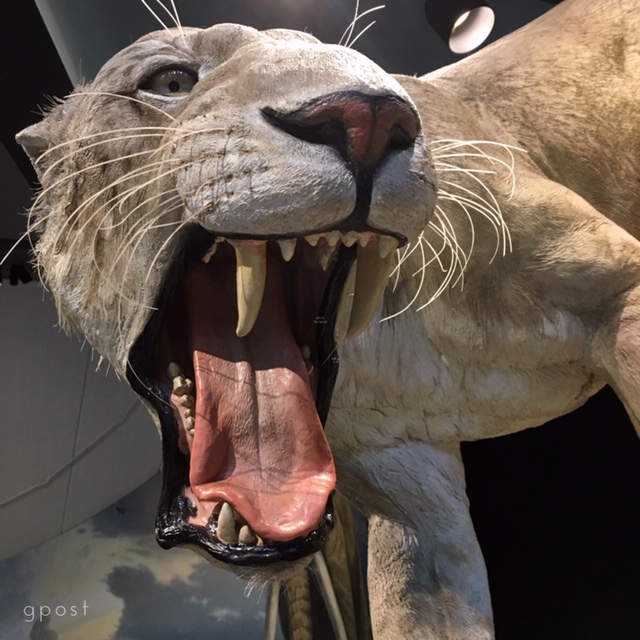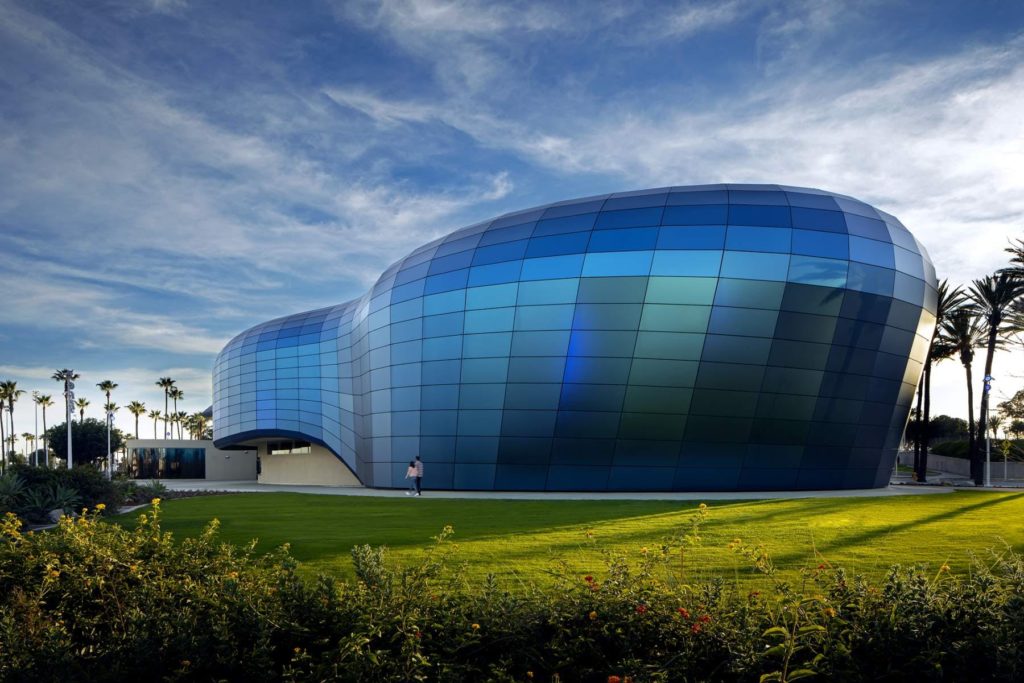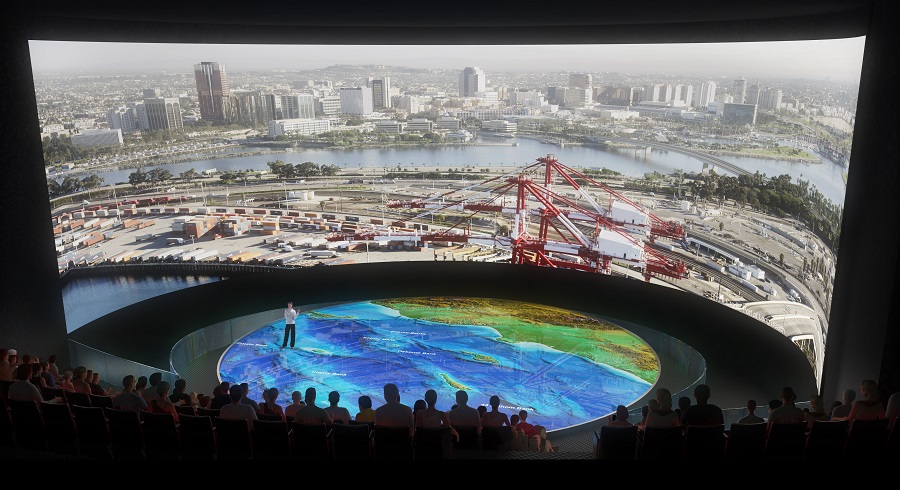
The near future is like a 10-day weather report. It follows the trend lines and makes predictions, which will come true except for all of those times when the unexpected happens.
I’m in the process of re-building the backyard after loosing 1½ big trees in the middle of it and experiencing the damage to boxwoods and other valued neighbors that came with that. The rebuilding includes a brand new linden tree that will need a four-by-three foot hole to inhabit (after I finish this) and various plugs for the hedgerows. So these days, I’m regularly hoping to minimize any more damage as the yard recovers its good appearance.
But it’s also a fool’s errand of plans and defenses because gale-force winds regularly whipping down from Philadelphia’s high points in the northwest felled those earlier trees, while countervailing wind-blasts sweep up from the Carolina coast whenever there’s a Nor’easter. The latter can sound like a freight train just outside the bedroom window as they funnel between the house and our 200-year old tulip poplar.
More trees will surely be lost.
While my inclination is to be defensive (and plant replacements, like the linden, in strategic places), I’m aspiring to a more dynamic point of view that recognizes not only the deaths of the living things that shape this place but also its broader evolution as the climate changes and more that’s unplanned starts to happen. I’m aiming for a healthier and saner recognition that this is a landscape in motion, that less shade and more sun might mean more vegetables, that some former residents (like the rabbits) might return with the carrots, and that I can change and grow with the confusion.
Coincidentally, while I’ve been trying to live my short term forecasts outside, I’ve also been reading one: Fareed Zakaria’s Ten Lessons for a Post-Pandemic World, which came out last October, barely six months into our tribulations with Covid-19.
You might know Zakaria as a charismatic CNN host and columnist for the Washington Post, who also happens to have a PhD in government from Harvard. In other words, he’s one of those “experts” who have attracted a great deal of skepticism over the past decade–particularly when they’re telling us what’s coming next. But hold on, while nine of his ten lessons toe a fairly predictable Center-Left path into tomorrowland, they are introduced by a rule-of-thumb that effectively qualifies all of the lessons that follow. Zakaria’s First Lesson is for all of us to “Buckle Up,” because what’s coming for certain is much more chaos and unpredictability (just like the novel coronovirus), and we can’t simply fortify or plan our ways out of it. We’ll have to learn how to go with, and even take advantage of the future’s chaotic flows.
Great, you say, more Confusion, Incompetence and Internal Divisions. More Infections, Killer Storms, Droughts and Wildfires. More Mass Shootings, Desperate Migrations and Habitat Destruction. More Genocides, Famines, Despots and Mindless Consumption. Altogether, a seemingly unhappy picture. And just like the weather reports I’m watching, More Unpredictability for the green half acre that I’m trying to care for. But in both spheres, there’s a way to keep our heads above water, and maybe, even to thrive.
That doesn’t mean that Zakaria’s other Lessons are unsatisfying—in fact, they’re often excellent—particularly Lesson Two (“What Matters Is Not the Quantity of Government But the Quality”) and Lesson Ten (“Sometimes the Greatest Realists Are the Idealists”). But, without question, his most valuable advice is to “Buckle Up” for the chaos coming our way.
Zakaria frames this pivotal lesson by way of analogy from the tech world. Some years ago, technologist Jared Cohen observed that all computer networks suffer from a “trilemma.” They can have two of the following qualities but never all three. Those qualities are openness, speed and security. For example, if they are “open” and “fast” they are, by their very nature, “insecure.”
Zakaria describes the analogous “trilemma” that confronts our post-pandemic future. We live in a world where:
Everyone is connected, but no one is in control. In other words, the world we live in is open, fast—and thus, almost by definition, unstable.
It would be hard to bring stability to anything so dynamic and open… [On the other hand,] a fast and stable one will tend to be closed, like China. If the system is open and stable [his third permutation], it will likely be sluggish rather than dynamic. Think of the nineteenth-century Austro-Hungarian and Ottoman empires: vast, open, diverse—and decaying.
Like the digital tech platforms that impact so much of our lives in the West today, living and working are inherently unstable because we have not made the kinds of investments or prepared ourselves adequately for the kind of future that is the necessary consequence of our “fast” and “open” societies.
Zakaria provides several examples that speak to our hoping for the best when we should be preparing ourselves for the worst. He starts, of course, with the current pandemic that epidemiologists and others (like Bill Gates) have been warning us about since SARS, MERS, and Ebola a decade or so ago and Zika more recently. What follows are three more alarm bells that are going off today but we’re largely ignoring, and there are many more instances where we’re neither investing nor preparing to live in an increasingly chaotic future.
MEAT. As a meatlover, this is a calamity that I actively try not to think about, but Zakaria skirts the better-known concerns (like animal cruelty, an unsustainable carbon footprint) to continue his focus on epidemiology. He describes the role that factory livestock farms will almost certainly be playing in global health because we want to get meat to our tables quickly (as “fast”) and with as little government monitoring of safety (or interference with “fast” and “open”) as possible. In light of the research that’s been done, Zakaria argues that not one but two frightening realities loom over our mass production of cattle, chickens and pigs:
These massive [livestock] operations serve as petri dishes for powerful viruses. ‘Selection for specific genes in farmed animals (for desirable traits like large chicken breasts) has made these animals almost genetically identical.’ Vox’s Sigal Samuel explains. ‘That means that a virus can easily spread from animal to animal without encountering any genetic variants that might stop it in its tracks. As it rips through a flock or herd, the virus can grow even more virulent.’ The lack of genetic diversity removes the ‘immunological firebreaks,’ Samuel quotes the biologist Rob Wallace: ‘Factory farms are the best way to select for the most dangerous pathogens possible.’
[And as if that’s not enough]… Factory farms are also ground zero for new, antibiotic-resistant bacteria, as animals are bombarded with antibiotics that kill most bacteria but leave those that survive highly potent. Johns Hopkins professor Robert Lawrence calls antibiotic-resistant bacteria ‘the biggest human risk of factory farms.’
We’re now aware of the virulence of Covid-19, can easily imagine worse viruses being “selected” in factory livestock farms, as well as the mistakes and “human errors” that could lead to widespread public exposure. We’ve also read stories about bacteria in hospitals that are demonstrating their resilience to our stock of antibiotics. Despite the horrific cost in lives that seems likely, few people even know about the time bomb that’s ticking in these production facilities. While we’re all interested “in getting back to normal” after Covid-19, an even less healthy and increasingly unstable future seems far more likely.
BIO-WEAPONS. We all know something about the groundbreaking research into messenger RNA that’s behind some of the coronavirus vaccines and the selective editing of human DNA using CRISPR technology that portends the “editing out” of genetic diseases before a child is born or the fabication of “designer babies,” but the likelihood of bioweapons has largely been confined to the sphere of science fiction in our imaginations. Given the widespread use of these innovations in global laboratories today, that’s an irresponsible mistake. And, as Zakaria notes, he’s been worried about this one for awhile:
I have always considered bioterror to be the most important under-discussed danger facing us….And yet…the main international forum for preventing it, the Biological Weapon Convention, is an afterthought. As [scholar Toby] Ord notes [in his book called The Precipice,], ‘this global convention to protect humanity has just four employees, and a smaller budget than the average McDonald’s.’
Zakaria is not an alarmist. Instead, he wants to show us some of the rarely discussed problems (he discusses several others too) so we can either address them before it’s too late or get ourselves more ready than we are today for the even more unstable world we’re sure to be living in when we fail to do so. I’ll break down the last quotation fromTen Lessons into three sentences because each one of them has its own implications for our post-pandemic future.
The costs of prevention and preparation are minuscule compared to the economic losses caused by an ineffective response to a crisis.
More fundamentally, building in resilience creates stability of the most important kind, emotional stability.
Human beings will not embrace openness and change for long if they constantly fear that they will be wiped out in the next calamity.

In his “Buckle Up” Lesson, Zakaria refers to a ground-breaking idea from another scholar: Nassim Nicholas Taleb’s notion of becoming “antifragile,” which he outlined in his highly influential 2012 book Antifragile: Things That Gain from Disorder. The “emotional stability” in an unstable world that Zakaria is talking about will likely require more from us than greater resilience. We’ll need to foster a mindset like Taleb’s that sees instability not as an insurmountable threat to our current “fragility” or merely something to fortify ourselves against. Instead, to be “antifragile” is to learn how to play offense instead of defense. It’s having the agency to be creative and gain strength from the chaos and crises that are sure to come.
In Antifragile, Taleb describes the objective like this:
Some things benefit from shocks; they thrive and grow when exposed to volatility, randomness, disorder, and stressors and love adventure, risk, and uncertainty. Yet, in spite of the ubiquity of the phenomenon, there is no word for the exact opposite of fragile [which fears, to the point of paralysis, both risks and uncertainty]. Let us call it antifragile. Antifragility is beyond resilience or robustness. The resilient resists shocks and stays the same; the antifragile gets better.
Taleb also captures his concept’s beauty when he writes later in the book:
Trial and error is freedom.
Difficulty is what wakes up the genius.
I want to live happily in a world I don’t understand.
As in the diagram above, to be antifragile is to be enabled (instead of disabled or merely hunkered down) as we face an increasingly unstable world: to incorporate the chaos, turning it into a creative force.
Even before antifragile became a concept, I found the sense of swashbuckling opportunism that’s embedded in such an outlook easier to admire in others than to live by myself. It’s hard to be constantly alive to the unexpected while also taking advantage of it. It seemed to be for pickpockets, pirates, Robin Hood’s merry band: people living on the edge of civilization, surviving by making the most out of whatever opportunity presented itself. But I’ve started to learn that an outsider’s perspective like this may be exactly what’s required in the increasingly unstable world that lies ahead. It’s time to step up my game.
Perhaps as a result, during the first and second waves of the pandemic last summer, I found some sobering consolation in two very wise people, each of whom had a helpful slant on the perspective we’ll need moving forward. It seems today that they complement both Zakaria and Taleb quite nicely.
In a July post I quoted the heroic Barry Lopez, wondering out loud:
How much natural resilience and willingness to rely upon one another has our freedom, wealth and belief in progress [that is, have our “fast” and “open” societies] allowed us to forget, but that we’ll need to remember if we’re to adapt and survive in this increasingly ‘throttled’ world?
He reminds us that we all have what’s necessary within us, only having to remember what we’ve managed to forget.
In an earlier post last May, as the early pandemic chaos compounded and I’d begun to lose perspective, I looked to Buddhist teacher Pema Chodron. With true hope, she says, there is always fear that whatever you long for won’t come to pass. Accepting that your hope is always bound up with your fear—so that you’re as curious about your fear as you are about your hope—can liberate you from your own constraints. What I needed was to face my worst fears more directly, to temper them against that present reality, and then bind them up with my hopes again.
Once again, it’s time to be more curious about our fears and not hide from them.
It’s time to “remember” our natural resilience and willingness to rely upon one another as the challenges compound.
It’s time to realize that things will not be “getting back to normal,” indeed that they can’t get back to normal in a world that’s as “fast” and as “open” as ours is today.
For the chaos and crisis that surely lies ahead, it’s time to prepare ourselves so that we’re enabled instead of disabled, so we become more resourceful instead of more depleted in the face of what’s sure to come.
This post was adapted from my April 4, 2021 newsletter. Newsletters are delivered to subscribers’ in-boxes every Sunday morning and occasionally I post the content from one of them here. You can subscribe by leaving your email address in the column to the right.








